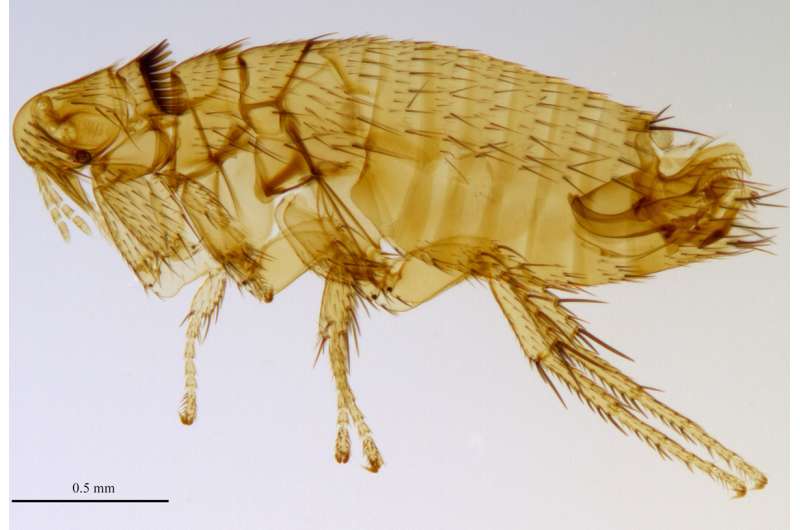Adult Musserellus vanpeeneni male, one of five new species recently described in the Journal of Medical Entomology. Credit: Hunter Seabolt
A new genus of flea and its five new species have been described in an article in the Journal of Medical Entomology. Four of the species were collected on the island of Sulawesi and the fifth was collected in the Indonesian province of West Papua on the island of New Guinea. The discovery by David K. Mardon and Lance A. Durden provides a window on the history, both prehistoric and recent, of Indonesia and illustrates the importance of scientific collections.
According to Dr. Durden of Georgia Southern University, male flea genitalia is arguably "the most complex genitalia of any organism and consists of a bedazzling array of uniquely shaped plates, rods, and spines that connect with the female of the same species during mating like a three-dimensional jigsaw puzzle." It is this complex anatomy that led to the discovery.
The fleas described in their paper had certain genital features not found in any known genera, prompting the authors to define a new genus they named Musserellus in honor of Dr. Guy Musser, who collected some of the specimens in Sulawesi in the 1970s. The newly described species include Musserellus vanpeeneni, Musserellus wattsi, Musserellus whitei, Musserellus marshalli, and Musserellus dunneti.
All of the new species are associated with rats and other rodents in the family Muridae.
More information: David K. Mardon et al. gen. nov., and Five New Species of Fleas (Siphonaptera: Stivaliidae) From Murid Rodents in Sulawesi and West Papua, Indonesia , Journal of Medical Entomology (2016). DOI: 10.1093/jme/tjw012
Journal information: Journal of Medical Entomology
Provided by Entomological Society of America
























